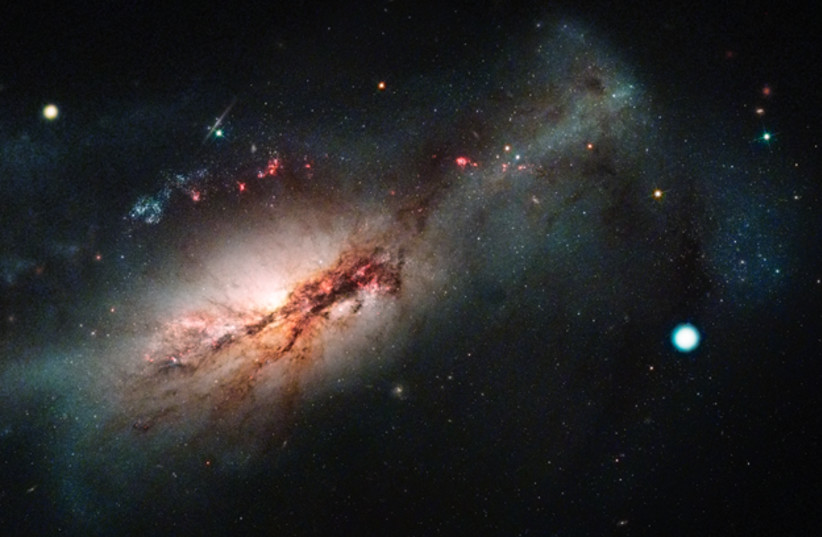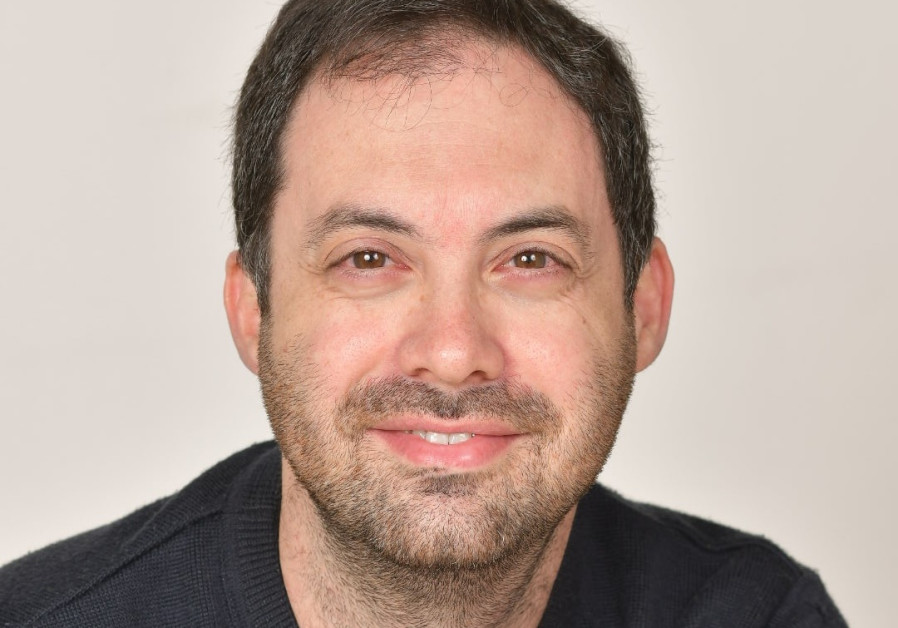Newly discovered supernova may answer 1,000 year-old mystery
The supernova was theorized 40 years ago, but this is the first time it has ever been definitively seen
By JERUSALEM POST STAFF
, JULY 15, 2021

Las Cumbres Observatory and Hubble Space Telescope
color composite of the electron-capture supernova 2018zd (the large
white dot on the right) and the host starburst galaxy NGC 2146 (toward
the left) (photo credit: NASA/STSCI/J. DEPASQUALE/LAS CUMBRES UNIVERSITY)
An electron-capture supernova, a new type of stellar explosion, was discovered, according to a study published in Nature Astronomy that
included Dr. Iair Arcavi of Tel Aviv University, the university
announced on Wednesday. While electron-capture supernovae have been
theorized about for 40 years, this is the first time that one has been
discovered.
A
supernova occurs when the forces that shape a star experience a sudden
imbalance. Every star is contracted by gravity, and the star needs to
counter balance this force. The sun, for example, uses nuclear fusion in
its core. The pressure that is produced by the core opposes the
gravitational pull until the nuclear fusion eventually dies out, and the
core begins to collapse. Different stars have different types of
collapses. A white dwarf is what would become of a star like the sun. In
the case of a white dwarf, further collapse is prevented by its high
density.
The
problem for stars ten times the size of the sun is that the
gravitational pull is able to surpass their density. In this case, the
core continues to collapse until a neutron star or black hole is formed,
accompanied by a giant explosion. the star to collapses and explodes
due to the removal of the electron quantum force, which is cause by the
electrons are capturing onto atomic nuclei. The result is the collapse
and explosion of the star otherwise known as a supernova.
Historically,
two types of supernovae have been witnessed. The thermonuclear
supernova is what occurs when a white dwarf star gains matter in a
binary star system. The other, a core-collapse supernova, is what
happens when a neutron star or a black hole is created by the core
collapse of a star more than ten times the size of the sun.
In
the 1980's, Ken'ichi Nomoto of the University of Tokyo theorized that
an electron-capture supernova is what would occur in a supernova that
was somewhere between a thermonuclear supernova and a core-collapse
supernova. Theorists have since tried to predict what this would look
like.
The
study, which was led by Daichi Hiramatsu of the University of
California, now has answers and was published in Nature Astronomy. It
focused on supernova SN2018zd from galaxy NGC 2146, which was discovered
by Japanese astronomer Koihchi Itagaki in 2018.
The
research shows that the supernova has all the properties of an
electron-capture supernova. In addition, the researchers were able to
see the star in pre-explosion archival images taken by Hubble Space Telescope, and the images show a star that would be expected to produce the electron-capture supernova.
Other
supernovae in the past have presented a few of the indicators if the
supernova, SN2018zd is the first to have all six – a progenitor star of
the mass range, strong pre-supernova mass loss, unusual chemical
composition, weak explosion, little radioactivity and neutron-rich
material.
"We
started by asking 'what's this weirdo?'," said Hiramatsu. "Then we
examined every aspect of SN2018zd and realized all of them can be
explained in the electron-capture scenario."
Another
benefit of this discovery is that it likely explains one of the most
famous past supernovae from 1054 CE. The supernova happened in our Milky
Way galaxy, and according to records of the time, it was so bright it
could be seen in the daytime and cast shadows at night. The remnant of
the supernova, the Crab Nebula, has been studied in great detail and
found to have an unusual composition. As it happened so long ago, it
cannot be said for sure, but it now believed that the supernova could
have been an electron-capture.

Dr. Iair Arcavi


No comments:
Post a Comment